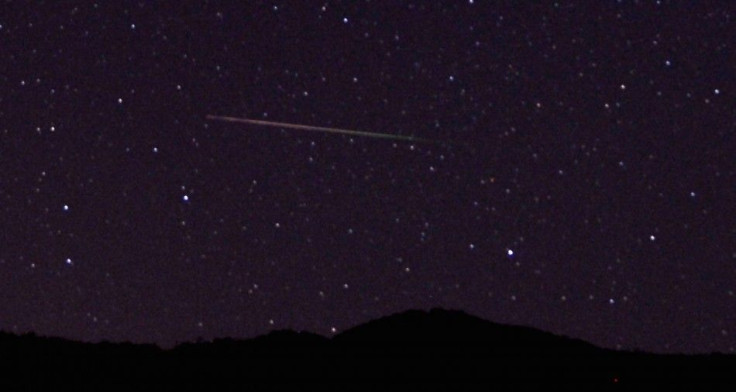2014 Geminids Meteor Shower: Where And What Time To Best View Meteor Shower Peak In Australia

The 2014 Geminids meteor shower will be reaching its peak on late Sunday evening, Dec. 14, in Australia. Without weather disturbances, the annual Geminids will be offering viewers with bright visible meteors streaking across the Australian skies late in the evening until the crack of dawn.
According to The Conversation, the Geminids meteor shower's radiant, which is the point in the sky from where the Geminids appear to radiate, is located close to the bright Castor star. Additionally, the radiant will rise early in the sky for the viewers who are in the further north location.
Listed below are the locations and times to start viewing the Geminids meteor shower's radiant rise:
1. Brisbane - around 9 p.m. (AEST)
2. Sydney - around 10:30 p.m. (AEDT)
3. Canberra - the radiant will rise after 10:40 p.m. (AEDT)
4. Melbourne - the radiant will rise just after 11 p.m. (AEDT)
5. Hobart - around 11:20 p.m. (AEDT)
6. Darwin - around 9:30 p.m. (ACST)
7. Adelaide - the radiant will rise just before 11 p.m. (ACDT)
8. Perth - the radiant will rise just before 10 p.m. (AWST).
Viewers are recommended to let their eyes fully adjust to the darkness for half an hour in order to have a remarkable viewing experience. In the first hour after the rise of the Geminids meteor shower's radiant, the number of visible shooting stars will be low.
The radiant will continue to rise as the night passes by and the number of meteors visible will increase as well. Sky watchers would be able to observe a meteor every minute.
To witness the best meteor shower display, the viewers are suggested to look at a short way to the left or right of the Gemini constellation in the sky. The further the viewers look from the radiant, the more remarkable the meteor shower display will be.
However, the moon is set to rise in Australia at around midnight local time so expect the weaker meteors to be washed out with the moon's brightness. NASA (National Aeronautics and Space Administration) astronomer Bill Cooke revealed in a statement that the Geminids are his favourite because they "defy explanation."
"Of all the debris streams Earth passes through every year, the Geminids' is by far the most massive. When we add up the amount of dust in the Geminid stream, it outweighs other streams by factors of 5 to 500," Cooke stated in a NASA Science News report.





















